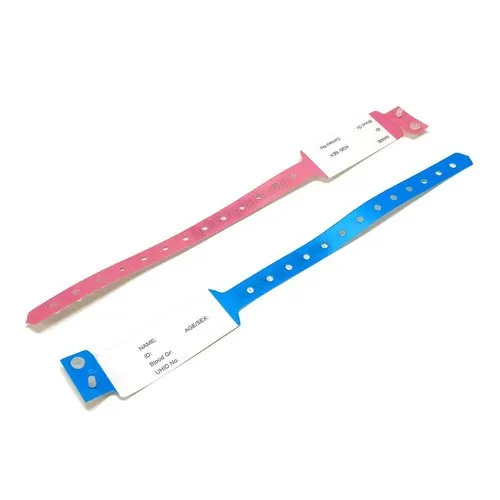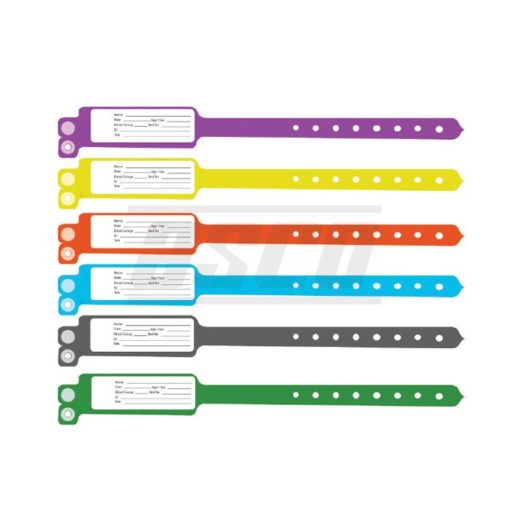Why Investing in a Top-Notch Patient Identification Band is Crucial for Medical Institutions
Why Investing in a Top-Notch Patient Identification Band is Crucial for Medical Institutions
Blog Article
Discovering the Numerous Kinds of Patient Identification Band Made Use Of in Medical Facilities
In the intricate globe of health care, the crucial duty of Patient Identification bands usually goes unnoticed. These bands, differing from straightforward paper wristbands to advanced RFID bands, develop the foundation of Patient safety procedures, making sure precision in Patient Identification.
Comprehending the Value of Patient Identification Bands
While they might feel like simple devices, Patient Identification bands play an important role in clinical facilities. These bands offer as a crucial tool for validating Patient identification, preventing medical errors connected to misidentification. The bands usually display essential details such as the Patient's name, age, blood kind, and any kind of well-known allergic reactions. They enable health care professionals to quickly access this essential details, thus assisting in precise and punctual medical therapy. Patient Identification bands likewise aid in simplifying management tasks, making certain accurate record-keeping and invoicing. In spite of their simpleness, these bands personify the principle of Patient security, a foundation of high quality healthcare. Without them, the threat of medical errors, and consequently, Patient injury, may dramatically increase.
Conventional Paper Wristbands: Their Use and Limitations
Conventional paper wristbands have been a staple in Patient Identification across various medical facilities. While their use prevails, they harbor particular constraints that may affect their effectiveness in Patient management. This area will certainly focus on the scope of their application and the intrinsic drawbacks related to their use.
Paper Wristbands: Usage Scope
In the realm of Patient Identification, paper wristbands have long held a critical function. These bands are commonly utilized in outpatient settings, where the Patient's keep is short-term. The wristbands include crucial info such as the Patient's name, date of birth, and a distinct Identification number. This straightforward, yet efficient system, allows doctor to quickly and accurately recognize people, ensuring the proper therapy is administered. Paper wristbands are likewise made use of in emergency circumstances, where rapid Identification is paramount. Their use reaches occasions like blood contribution drives and mass vaccination programs, further emphasizing their convenience. Regardless of developments in innovation, the modest paper wristband continues to be a cost-efficient and trustworthy remedy for Patient Identification in various health care scenarios.
Limitations of Paper Wristbands
Despite their widespread use, paper wristbands are not without their drawbacks. In addition, paper wristbands commonly lack the technical capacities of even more contemporary options, such as barcoding or RFID chips, restricting their functionality to simply presenting composed info. Paper wristbands can cause discomfort or skin irritation to some people, specifically when used for extensive periods.
Barcoded Wristbands: Advancements in Patient Identification
While Patient Identification has long been a crucial element of healthcare, the arrival of barcoded wristbands represents a considerable jump onward. These bands utilize the simpleness of barcoding technology, enabling for Patient information to be rapidly checked and accessed. They improve the rate and precision of Patient Identification, minimizing the threat of clinical errors connected to misidentification.
Radio Frequency Identification (RFID) Bands: a Step Towards Futuristic Healthcare
The development of Patient Identification bands has actually brought about the appearance of Superhigh frequency Identification (RFID) Bands (patient identification band). These cutting-edge devices present view key advantages for health care facilities, offering an extra effective and highly advanced ways of Patient Identification. The implementation of RFID in medical care is a considerable step towards a more futuristic method to Patient administration and security
Recognizing RFID Bands

RFID Bands: Secret Advantages
Primarily, these bands boost Patient security by supplying accurate, rapid Identification, therefore minimizing clinical errors. RFID bands can store a huge try this out amount of Patient information, including medical background and allergies, making it possible for customized care. In general, RFID bands stand for a considerable improvement in Patient Identification technology, benefiting both patients and healthcare service providers.
Applying RFID in Health Care
These bands supply a seamless method to track and determine individuals, ensuring their security and enhancing efficiency in therapy procedures. RFID bands decrease clinical errors by giving precise Patient Identification, which is vital in protecting against misdiagnosis or wrong medication management. Thus, the execution of RFID bands is a substantial action towards boosting Patient security and health care shipment.

Color-Coded Wristbands: Aiding in Quick and Accurate Diagnosis
In the dynamic environment of a clinical center, color-coded wristbands have arised as important devices for swift and specific Identification of a person's clinical condition. These wristbands, worn by patients, carry details colors that match to different clinical conditions or statuses. Red could show allergy threats, while yellow could symbolize a fall risk. This system is made to use prompt visual cues to doctor, improving Patient security and care top quality. In emergency situations, the use of these wristbands permits for rapid decision-making. However, the efficiency of color-coded wristbands relies on the harmony of shade analysis across health care institutions, calling for usual standards for constant application.
Strategies for Reliable Application and Administration of Patient ID Bands
Attaining ideal use of Patient Identification bands necessitates a well-structured method for their implementation and monitoring. Patient education and learning is likewise essential; people must recognize the purpose of the bands and the demand for their consistent wear. It's vital to have a backup plan in area, such as barcode scanning or biometrics, to ensure that Patient Identification is never compromised.
Final thought
Patient Identification bands are essential in medical facilities to guarantee security and accuracy. Reliable execution and monitoring of these bands can significantly reduce medical errors, improve performance, and improve overall Patient care.
These bands, differing from straightforward paper wristbands to sophisticated RFID bands, form the backbone of Patient safety methods, making certain precision in Patient Identification.The evolution of Patient Identification bands has actually brought regarding the appearance of Radio Frequency Identification (RFID) Bands. In general, RFID bands stand for a substantial improvement in Patient Identification innovation, profiting both people and medical care suppliers.
RFID bands decrease medical mistakes by providing accurate Patient Identification, which is important in view avoiding misdiagnosis or incorrect medication management. Patient education is additionally vital; patients should comprehend the purpose of the bands and the need for their continuous wear.
Report this page